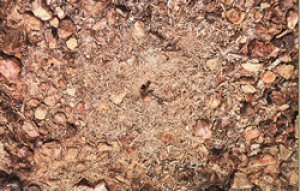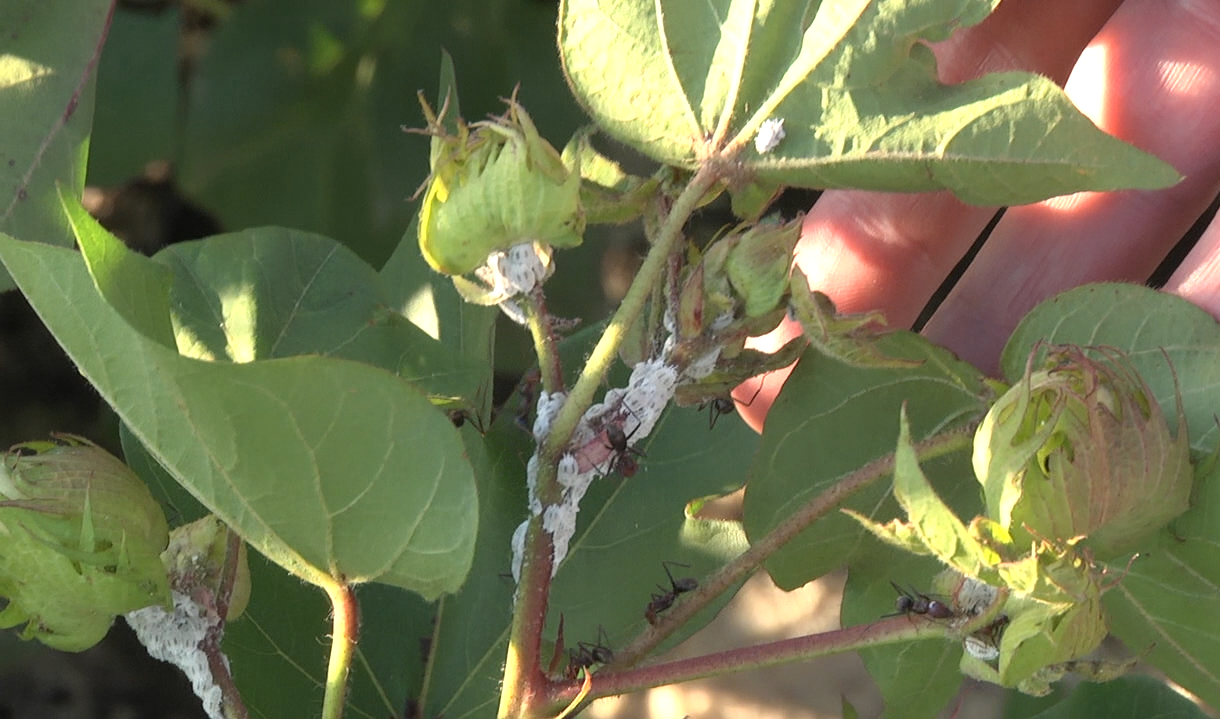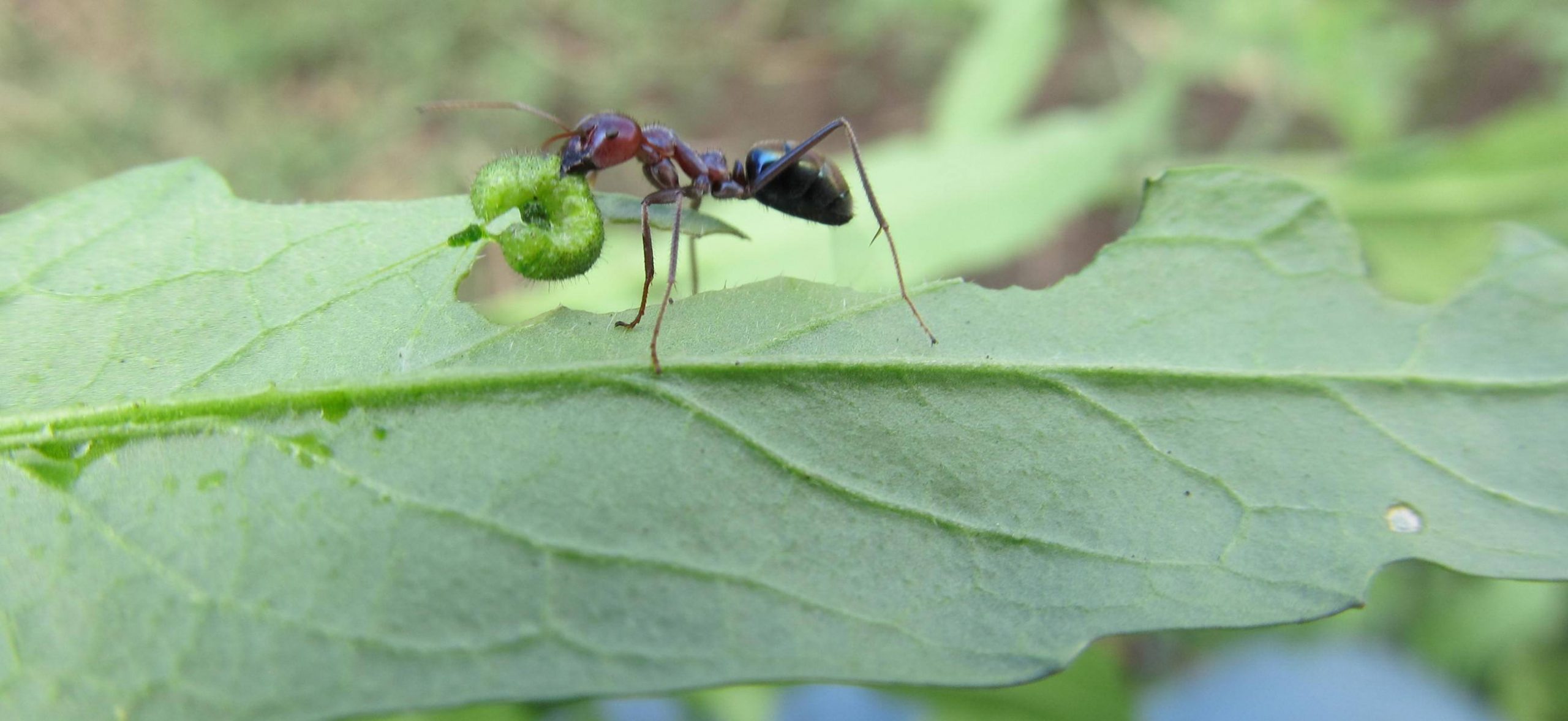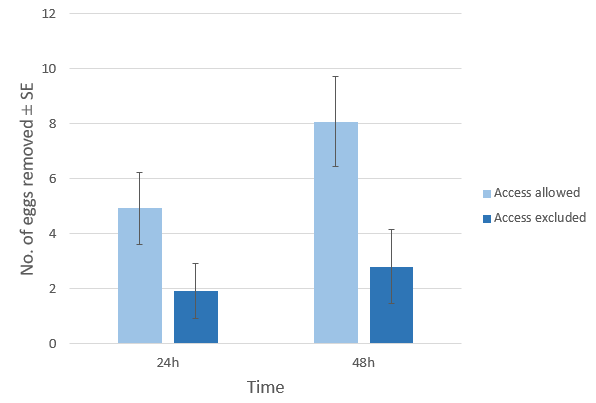While ants are most often thought of as a nuisance in kitchens or at picnics, they can also be present in a wide range of crops and other farm areas. Although ant nests are usually built in undisturbed locations (in field crops ants are most commonly found on field margins), in some soils they can colonise cultivated areas quite quickly.
Ants can be classified as pests, beneficials or both, depending on the situation.
Damage to establishing crops

Pheidole sp. nest ringed by discarded seed. (Photo: D. Ironside)
Seed harvesting ants (Pheidole and Meranoplus spp.) carry small seeds and the germ from larger seeds back to their nest. Some ant species will cut and remove seedling leaves. Field crops are most at risk at sowing and germination, particularly pastures sown onto undisturbed or burnt ground.
It’s not all bad though – seed harvesting ants can also be potential biocontrol agents of weeds.
Impact on soil
Funnel ant (Aphaenogaster pythia) nests result in the removal of soil from around plant roots, creating an artificial drought situation. They are most common in pastures around the Atherton Tablelands.
Soil-nesting ants can also positively influence plant growth and yields, as their tunnels have the potential to increase rainfall infiltration.
Protection of pest species
Many ant species farm sap-sucking pests (e.g. aphids, mealybugs, and scale insects) on plants in return for a sweet honeydew reward. They zealously guard their food source (i.e. the pest species) from attack by other arthropods.

Ants (Iridomyrmex sp.) harvesting mealybug honeydew in cotton. (Photo: P. Grundy)
Ants as predators
Ants and other predators play an integral role in supressing pest populations. Many ant species (e.g. Iridomyrmex and Rhytidoponera spp.) are voracious predators of eggs and small, soft-bodied prey. Pheidole sp. can also be predators of moth eggs, small larvae and leafhoppers. Typically, predaceous ants forage on the ground, but some species climb up onto plants.
However, the role of ants as beneficials is not always clear cut. Predation by ants can impact on the biocontrol effectiveness of other species (e.g. ants may eat eggs that have already been parasitised by other beneficials).

Ant (Iridomyrmex sp.) holding lepidopteran larvae in its mandibles (Photo: M. Miles)
While some research has been done around the world on ants as predators of specific pest species, minimal information is available on their impact as generalist predators or the impact of ants in field crops.
In a mungbean field trial conducted by DAF in Kingaroy in 2017, significantly more Helicoverpa armigera eggs were removed from plants where ground-based invertebrate predators (including ants) were allowed access to plants (Figure 1).

Figure 1. Results of egg card trial where ground-based predator access was controlled.
Invasive ant species
Exotic ants have the potential to impact on our lifestyle, unique environment and profitable agriculture. These three highly invasive ant species are currently the target of eradication programs in Queensland.
Fire ants are usually found in open areas such as lawns, pastures, along roadsides and in unused cropland. They have coppery-brown heads and darker abdomens, and inflict a painful, fiery sting. In rare cases they can cause a severe acute allergic reaction (anaphylaxis). More about fire ants…
Electric ants are tiny and golden-brown. They live in soil and objects that touch soil, including plant and inorganic materials. Electric ants prey on and compete with other insects and can displace large numbers of native animals, ants, and other insects. They can also inflict painful stings on wild and domestic animals and on humans. More about electric ants…
Yellow crazy ants have a long body and very long legs and antennae. Their name comes from their erratic walking style and frantic movements, especially when disturbed. Yellow crazy ants can disrupt natural environments, affect the horticulture industry, and spray formic acid which causes skin and eye irritations. More about yellow crazy ants…
Suspect ants can be reported to Biosecurity Queensland either online or by phoning 13 25 23.
More information
Evans, T.A. et al. (2011). Ants and termites increase crop yield in a dry climate. Nat. Commun. 2:262 doi: 10.1038/ncomms1257.
Mansfield, S. et al. (2003). Ants as egg predators of Helicoverpa armigera (Hübner) (Lepidoptera: Noctuidae) in Australian cotton crops. Australian Journal of Entomology 42: 349-351.
The AntWiki website contains a section on Australian ants.
The egg card research above was conducted under project DAQ00196, supported by the Grains Research and Development Corporation (GRDC).
